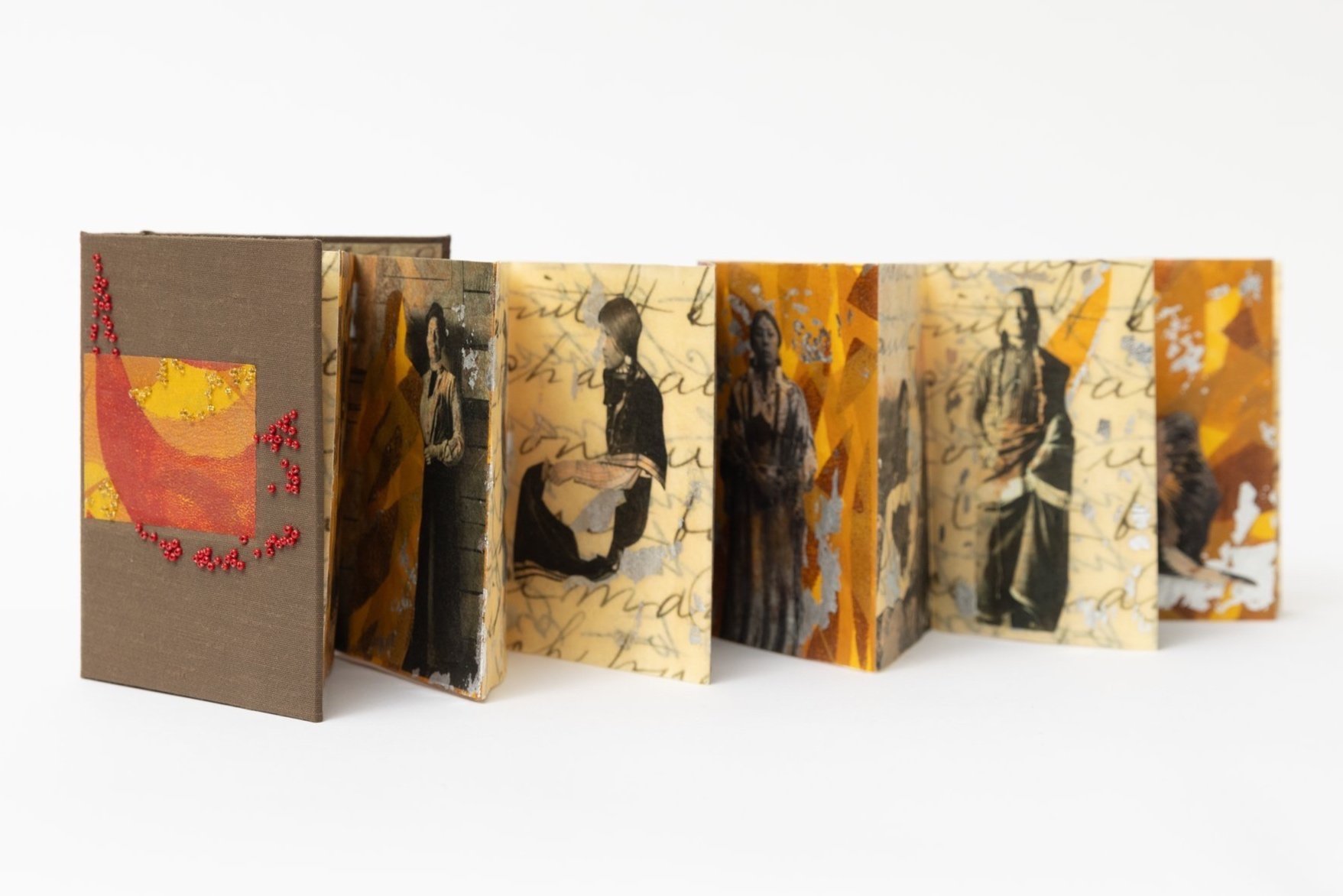
Other-Object-Me
“Life must be understood backwards; but…it must be lived forwards.”
Søren Kierkegaard (Danish philosopher 1813-55)

I Can Not See Myself
I Can Not See Myself features Abbie William Hill between 1902-1906 when she was commissioned by the railroads to paint western landscapes. And specifically her time at Trout Lake, Washington (neighboring Yakama Reservation) and Flathead Reservation, Montana.
This piece draws from Abbie’s 1902 journal entry of an experience with a Native woman insisting that Abbie sketch herself just as she had sketched a young Native man. After Abbie’s objection to the idea because she “can not see herself” the woman returns with a mirror and Abbie becomes the object as she hastily sketches herself. This experience shifted who was the other, the object, and opens an opportunity to look closer at how we humanize the other. It is easy to look back and see, and judge, how past societies othered groups that were different. I am interested in both asking what did Abbie see and experience, and how do we today continue to other and objectifypeople that are different? In Abbie’s experience with the Native Americans she encountered, I wonder did she see their realities—the loss of identity, language, culture, and place? Did she see their loss from disease and boarding schools? And today, do we have the courage to ask ourselves—How limited is my vision? Can I see the other as I see myself? What are the ways we continue to other?
Accordion structure, mono-prints, photos used with permission from the Collins Memorial Library, University of Puget Sound | X pages; H x W x D inches, opens to X inches| Unique| 2023 | Photograph by the Collins Library
This book is in the University of Puget Sound Collins Library collection.
©Debbi Commodore

29 Nations
Washington State is home to 29 tribes. Indigenous people have experienced a culturally rich and tragic history. Their influence on this area is not just found in the history books it can be found in our place names, current conservation efforts, leadership, state culture and the arts.
Modified accordion, image used with permission from University of Washington Libraries, Special Collections, NA729 |Texts from Shinn's History of the American People (1893) and Washington Indian Tribes Today (Seattle Times 2016) | X pages; 5.25 x 8 x 1.5 inches, opens to X inches | Unique | 2017 | Photograph by Ross Mulhausen
©Debbi Commodore

Race
As a country we have deep tension and struggle with acceptance we all are equal within our race—Human Race. In the short history of the United States, racial identification has been one of our country’s most complex and dominating issues resulting in genocide, riots, civil war, segregation, assimilation, extinction of groups, extraction of cultural identity, and the multi-generation impact of oppression.
Race explores how our eyes read the words Human Race when the letters have been reordered. My intent is to recognize that in spite of the devastation, destruction, oppression and the countless attempts to classify people we ultimately all remain members of the same group, the same race.
It is important to recognize the complex, and often untold, realities of our history with racial identification so that we can walk stronger alongside the groups that have suffered and support them in rebuilding.
Flag book structure, letterpress printed | 8 pages | 5.25 x 5.25 x .75 inches (up to 45 inches stretched out) |Edition of 3 | 2014 | Photograph by artist
©Debbi Commodore


